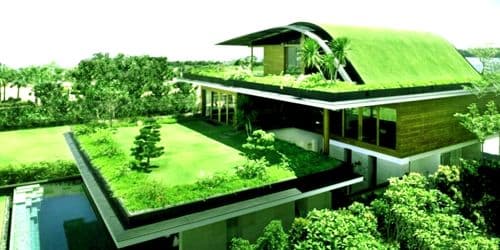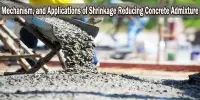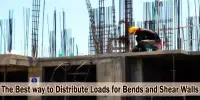A green roof is a layer of vegetation planted over a waterproofing system that is installed on top of a flat or slightly–sloped roof. It is a roof of a building that is partially or completely covered with vegetation and a growing medium, planted over a waterproofing membrane. Depending on the type of green roof you install, the plants may be modular or have drainage layers. It may also include additional layers such as a root barrier and drainage and irrigation systems. However, all green roofs include a few important features, such as waterproofing and root repellent, to keep the structure safe and undamaged. Container gardens on roofs, where plants are maintained in pots, are not generally considered to be true green roofs, although this is debated.
Green roofs are suitable for retrofit or redevelopment projects as well as new buildings and can be installed on small garages or larger industrial, commercial and municipal buildings.
Rooftop ponds are another form of green roofs which are used to treat greywater. Vegetation, soil, drainage layer, roof barrier, and irrigation system constitute a green roof. The appropriate depth of any green roof depends on the roof structure, the plants are chosen, annual rainfall, and stormwater performance requirements.
The installation of a green roof reduces the need to manage any stormwater that accumulates, as well as the stress put on local sewer systems. Green roofs serve several purposes for a building, such as absorbing rainwater, providing insulation, creating a habitat for wildlife, increasing benevolence and decreasing the stress of the people around the roof by providing a more aesthetically pleasing landscape, and helping to lower urban air temperatures and mitigate the heat island effect. While green roofing can benefit you and the community, it is a costly process that can lead to some unforeseen expenses.

They fall into three main categories—extensive, intensive, and semi-intensive.
- An extensive green roof has a shallow growing medium—usually less than six inches—with a modest roof load, limited plant diversity, minimal watering requirements, etc.
- Intensive green roofs have more soil and a deeper growing medium—sometimes several feet—that can support a more diverse plant selection, including small trees.
- Semi-intensive green roofs include features of both types.
Green roofs are suitable for retrofit or redevelopment projects as well as new buildings and can be installed on small garages or larger industrial, commercial and municipal buildings. Scientists and engineers are still researching the best methods for green roofing. They effectively use the natural functions of plants to filter water and treat the air in urban and suburban landscapes. They replace a hard infrastructure with one that’s not only more efficient but also beautiful and useful.
















